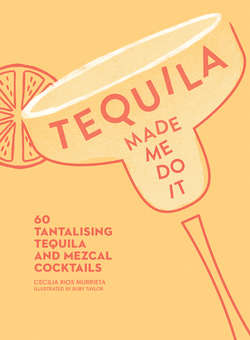Читать книгу Tequila Made Me Do It: 60 tantalising tequila and mezcal cocktails - Ruby Taylor - Страница 8
ОглавлениеMEZCAL
Para todo mal mezcal, para todo bien tambien.
‘For everything bad, mezcal, for everything good as well.’
Mezcal is the second-most popular Protected Designation of Origin of Mexico’s spirits. Unlike tequila’s standardised production method, mezcal is all about diversity. It can be made from over 40 agave varietals found in the nine designated states. Oaxaca, Guerrero, Guanajuato, San Luis Potosí, Zacatecas, Durango, Tamaulipas, Michoacán and Puebla are all part of the mezcal PDO, spanning 500,000 km2 (193,000 sq. mi.) and making it the largest PDO in the world. But this enigmatic spirit hasn’t always been popular. Long ostracised, mezcal was portrayed as the poor man’s spirit. It is no secret that tequila has played a role in tarnishing mezcal’s reputation, favouring tequila over other agave spirits.
But even as discerning palates indulged in tequila, there were always those whose own defying nature, in the quest for adventure, would wander into strange territories, much like Alice, and tumble down the rabbit hole of mezcal. Aficionados would render themselves enamoured of the fiery spirit of Oaxaca. Mezcal may have been neglected over the years, but to anyone with a desire for the unknown, it remains a spirit with the power to inspire imbibers for generations to come.
The production process for mezcal is the same as tequila. However, the vast majority of mezcals produced today still possess an artisanal quality of the elements and processes used during roasting, crushing, fermentation and distillation. In Oaxaca, where more than 80 per cent of mezcals are produced, a traditional palenque (distillery) is composed of an underground, stone-lined oven, a tahona, wooden open-air fermentation tanks and simple copper pot stills. These parts, especially the signature cooking method of roasting the agaves in an underground firewood oven, is what gives mezcal its distinct smokiness. The production capacity of mezcal is much smaller than tequila. The production of a single palenque with two 350-litre stills can range from 10,000–12,000 litres a year. In other words, mezcal is micro-distilled.
The most common agave varietal used in mezcal is Agave espadín (angustifolia Haw), whose cultivation originated in Oaxaca in the mid-20th century. Today, more than 75 per cent of mezcal is from espadín agaves, chosen for their larger piñas and higher sugar concentration. Wild agaves are also used to create rare and exclusive variations, elevating them to the luxury spirits market. Agaves like the Potatorum or Tobala can be found in isolated regions in the high sierras of Oaxaca. These smaller agaves are highly aromatic and can be very complex in flavour, with notes of lavender, cardamom and lime zest. Another popular wild agave is the Madrecuixe, with earthy notes of cacao, clay and butterscotch.
The rise in mezcal’s popularity has not only generated income to some of Mexico’s most isolated regions, it has also allowed migrant labourers to return to their communities and work in their forgotten trade. The increase in demand for rare agave spirits has generated opportunities for rural populations to create long-term businesses and the promise of a future for generations to come.
TYPES OF MEZCAL
The PDO for mezcal was declared in 1994. Mezcal is predominantly produced with 100% Agave and can be classified into the following categories:
Mezcal (Industrial) - Mezcal produced using modern technology that can include autoclaves, mechanical crushers, stainless steel fermentation tanks and continuous or column stills.
Mezcal Artesanal - Mezcal produced using traditional methods, including underground stone-lined ovens, tahonas, or manual crushing, fermentation tanks made from wood, clay, stone or hide, and traditional copper alembic stills.
Mezcal Ancestral - Mezcal produced using the same methods as the Mezcal Artesenal, with the added use of clay vessels for distillation.
MEZCAL DE PECHUGA - Mezcal distilled with additional ingredients can also be known as Mezcal de Pechuga. This is triple-distilled in single pot copper stills with a maceration of seasonal fruits and spices, including tejocote, guava, pineapple, apples, cinnamon and clove, depending on the producer. After a batch of espadín mezcal is made, it is added back to the still with the fruit. A raw turkey breast is suspended over the still in a mesh cloth. The mezcal distills again, absorbing oils from the fruit. While it evaporates, it permeates the turkey breast, obtaining fats and oils from the meat’s juices, adding a velvety texture to the resulting spirit.
